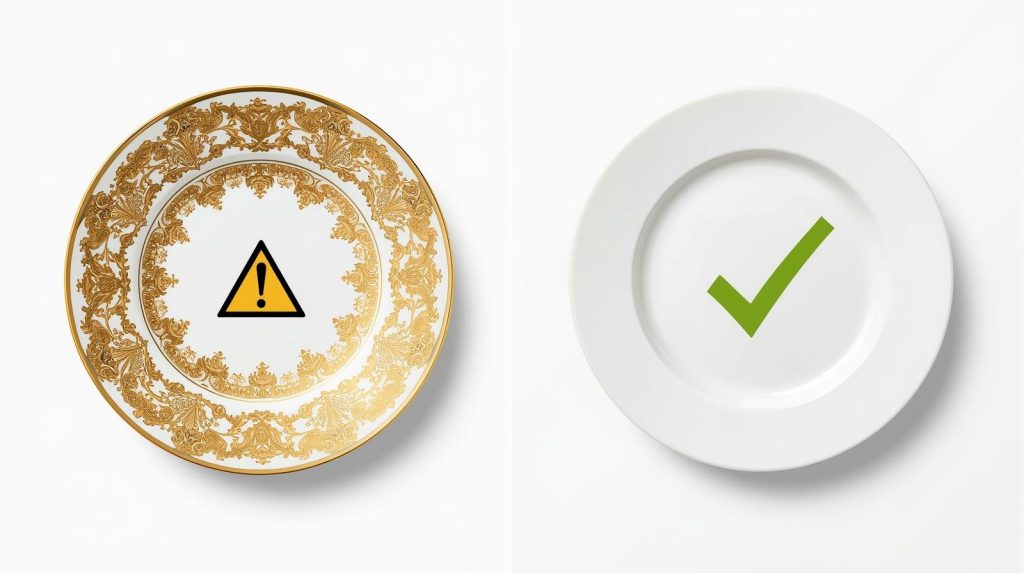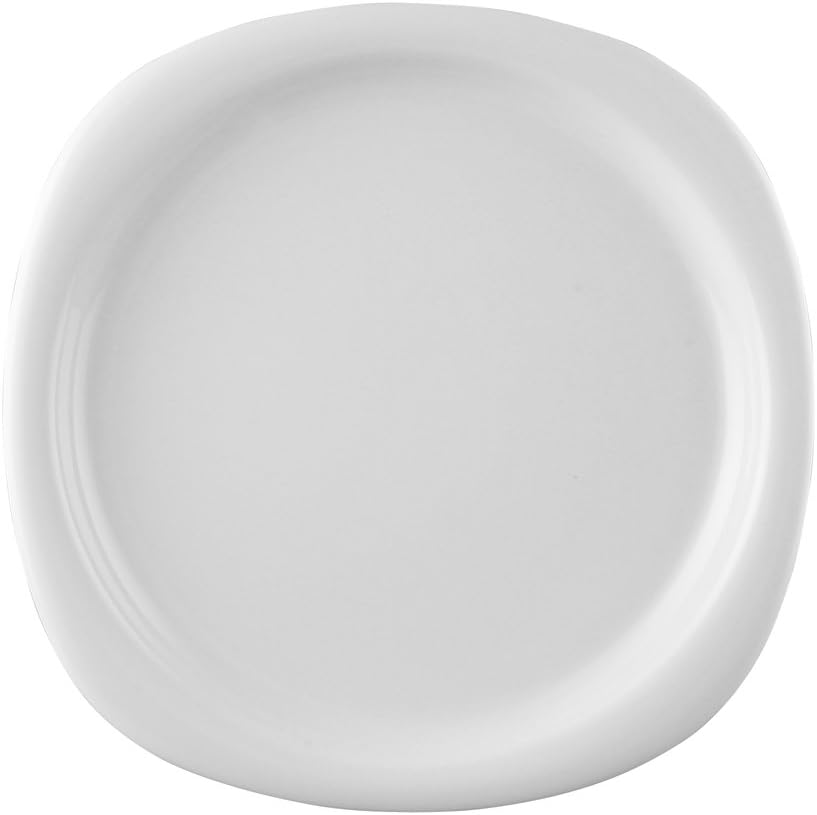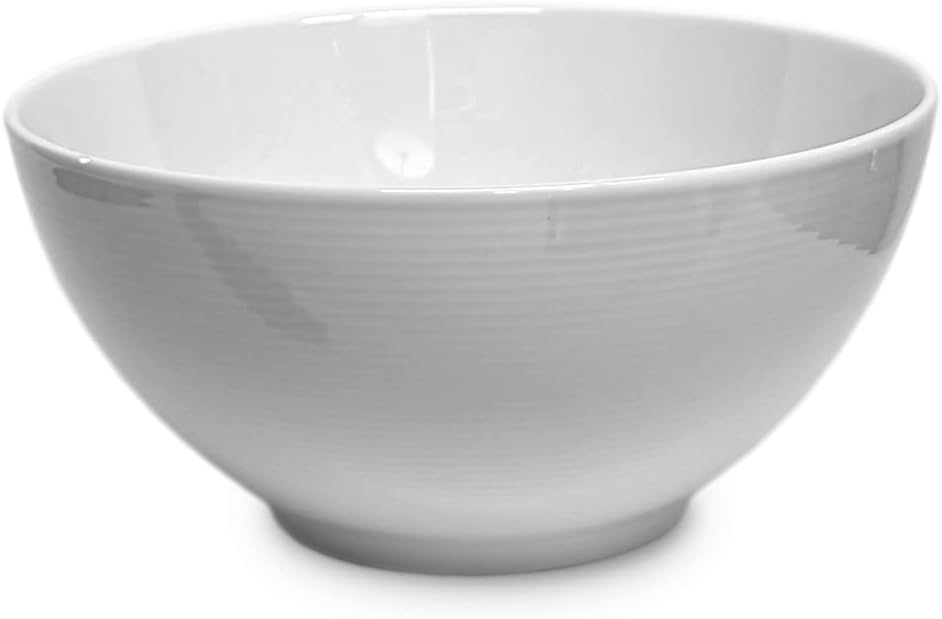If you own Rosenthal china or are considering purchasing pieces from this prestigious German brand, you’re likely wondering: Does Rosenthal china contain lead?
The short answer is that modern Rosenthal products manufactured after the 1990s are lead-free and meet current international safety standards.
However, vintage pieces produced before stricter regulations may contain lead in decorative glazes or gilt trim.
Lead in dinnerware has become a significant concern for consumers, particularly parents and health-conscious individuals who want to ensure their families’ safety.
With Rosenthal’s long history dating back to 1879, understanding which pieces are safe for daily use versus display-only is crucial for collectors and everyday users alike.
This comprehensive guide will examine Rosenthal’s lead content across different manufacturing periods, compare it with other fine china brands like Haviland and Lenox, and provide practical testing and usage recommendations.
Does Rosenthal China Contain Lead?

Modern Rosenthal china (post-1995) is manufactured to comply with FDA and European Union safety standards and is considered lead-free for consumer use.
Vintage Rosenthal pieces (pre-1990s), especially those with gold trim, hand-painted decorations, or bright-colored glazes, may contain lead and should be tested before use with food.
The brand’s current production uses lead-free glazes and materials that meet California Prop 65 and international safety requirements.
Understanding Rosenthal China
Rosenthal, founded in 1879 by Philipp Rosenthal in Selb, Germany, has been synonymous with luxury porcelain and fine china for over 140 years.
The company built its reputation on innovative designs, collaborations with renowned artists, and exceptional craftsmanship.

Throughout its history, Rosenthal has produced everything from everyday dinnerware to museum-quality art pieces.
The brand manufactures primarily hard-paste porcelain, known for its durability, translucency, and resistance to chipping.
In 2009, Rosenthal became part of the Italian Sambonet Paderno Industrie group, though production continues to follow strict European manufacturing standards.
Modern Rosenthal pieces are made in Germany and Italy, adhering to contemporary safety regulations that prohibit lead in consumer dinnerware.
Lead in Dinnerware: Understanding the Context
Lead was historically incorporated into ceramic glazes and decorative elements for several practical reasons.
It lowered the melting temperature of glazes, created brilliant colors (particularly reds, yellows, and oranges), and produced the lustrous finish associated with fine china.
Gold and metallic decorations often contained lead compounds that enhanced adhesion and shine.
However, lead exposure poses serious health risks, particularly for children and pregnant women.
Even small amounts can cause neurological damage, developmental delays, kidney problems, and reproductive issues.
Lead leaches more readily from ceramics when in contact with acidic foods like tomatoes, citrus, or vinegar-based dressings.
The FDA established strict regulations in the 1970s, with current limits set at 0.5 parts per million (ppm) for the lip area of cups and 0.5 ppm for flatware surfaces.
The European Union’s regulations (EC No 1935/2004) are similarly stringent. California’s Proposition 65 requires warnings for products containing lead above specific thresholds.
Most reputable manufacturers eliminated lead from their production processes by the mid-1990s to comply with these evolving standards.
Modern Rosenthal Products and Lead Content
Contemporary Rosenthal china manufactured from the mid-1990s onward is produced without lead-containing materials.
The company transitioned to lead-free glazes, underglazes, and decorative processes in response to international regulations and consumer demand for safer products.
Modern Rosenthal pieces undergo testing to ensure compliance with FDA standards (21 CFR 545.450), European Union regulations, and other international safety requirements.
The manufacturing process uses alternative materials like zinc, boron, and alkali compounds to achieve the desired glaze properties without lead.

Even decorative elements, including metallic trims and hand-painted designs, now utilize lead-free formulations.
When purchasing new Rosenthal china directly from authorized retailers, consumers can be confident in the product’s safety for food contact.
The company’s current collections, including popular lines like Maria, Versace collaborations, and Thomas by Rosenthal, meet all contemporary safety standards for daily use.
If you’re buying new Rosenthal products, request documentation confirming compliance with current lead-free standards.
Reputable retailers can provide certificates of compliance or manufacturer specifications that verify the product’s safety status.
Vintage and Antique Rosenthal Pieces: What You Need to Know
Vintage Rosenthal china produced before the 1990s requires more careful consideration.
Pieces manufactured between 1879 and the early 1990s may contain lead, particularly in certain decorative elements.
The highest risk exists with items featuring gold or platinum trim, hand-painted decorations, bright red or orange colors, and over-glaze decorations applied after the primary firing process.
Identifying potentially problematic pieces involves examining the backstamp and decorative style.
Earlier Rosenthal marks (pre-1950s) and pieces with elaborate gilt work should be tested before food use.
Patterns with vibrant hand-painted flowers, particularly those in red, orange, or yellow hues, are more likely to contain lead-based pigments.
Rosenthal’s “Ivory” and hand-painted floral patterns from the early to mid-20th century often featured elaborate decorations that may contain lead.
The popular Sanssouci pattern in gold trim versions could potentially have lead content depending on the production year. Studio Line pieces from the 1960s-1980s with artistic glazes should also be tested.
For collectors, this doesn’t mean vintage Rosenthal is worthless or dangerous—it simply requires appropriate handling.
These beautiful pieces can still be displayed, used for dry goods, or reserved for special occasions with non-acidic foods, provided you take appropriate precautions.
Similar concerns apply to other vintage ceramics, including pieces from manufacturers like Myott china ceramic dishes, which also require testing when produced during earlier manufacturing periods.
Is the Rosenthal China Oven Safe?
Beyond lead concerns, many Rosenthal owners wonder about oven safety. Most modern Rosenthal porcelain is oven-safe up to temperatures of 300°F (150°C), but this comes with important caveats.
Pieces without metallic decorations, gold or platinum trim, or hand-painted elements can typically withstand moderate oven temperatures for warming or baking.
However, Rosenthal china with any metallic embellishments should never be placed in the oven or microwave.
The metal can spark, damage the piece, and create fire hazards. Even lead-free gold trim will be damaged by high heat and can cause dangerous reactions in microwaves.
For oven use, follow these guidelines: always check the manufacturer’s care instructions specific to your pattern, avoid temperature extremes and sudden temperature changes (thermal shock can crack porcelain), preheat items gradually rather than placing cold china into a hot oven, and use temperatures below 300°F (150°C) for safety.
The Thomas by Rosenthal line, designed for everyday use, typically offers better heat tolerance than delicate, decorative Rosenthal collections.
When in doubt, use alternative ovenware and reserve your Rosenthal for serving rather than cooking.
How to Test Your Rosenthal China for Lead
If you own vintage Rosenthal pieces or have purchased second-hand china of uncertain age, testing for lead content provides peace of mind.
Several testing options are available at different price points and accuracy levels.
Home test kits like 3M LeadCheck swabs cost $10-30 and provide quick presumptive results.
These swabs change color when exposed to lead, though they can produce false positives and may not detect lead beneath glazes.
They’re best used on decorative surfaces, gilt trim, and painted areas where lead is most likely present.
XRF (X-ray fluorescence) testing offers the gold standard for accuracy. Professional testing services charge $50-150 per piece but provide precise lead concentration measurements.
Some community health departments, universities, or environmental agencies offer free or low-cost XRF testing events.
Mail-in laboratory testing provides accurate quantitative results, with costs ranging from $30-100 per sample. This requires sending small samples or the entire piece to a certified laboratory.
When testing, focus on surfaces that contact food: the eating surface of plates, the rim and interior of cups and bowls, and any decorative elements on functional surfaces.
The FDA’s action level is 0.5 ppm for surfaces that contact food, though many experts recommend avoiding any detectable lead for items used regularly.
Comparing Other Fine China Brands
Does Haviland China Contain Lead?
Haviland china, another prestigious brand with roots in 19th-century Limoges, France, shares similar lead concerns with Rosenthal.
Modern Haviland production (post-1990s) is lead-free and compliant with current safety standards. The company transitioned to lead-free glazes in response to international regulations.
Vintage Haviland pieces, particularly those manufactured before 1980, may contain lead in decorative elements.
Haviland’s famous hand-painted floral patterns, gold trim, and vibrant colored glazes from earlier eras often utilized lead-based formulations.
The brand’s Limoges production from the late 1800s through the mid-1900s is especially likely to contain lead in decorative elements.
Collectors should test vintage Haviland before food use, particularly pieces with elaborate gold borders (common in patterns like “Ranson” and “Schleiger”), hand-painted fruits and flowers in bright colors, and any over-glaze decorations.
Modern Haviland collections sold through authorized dealers meet current safety standards and can be used without concern.
Lenox Spice Village Lead Content
The Lenox Spice Village pattern, produced from 1983 to 1992, has specific concerns regarding lead content.
This whimsical pattern featuring houses shaped like spice jars became collectible but has raised safety questions among owners.
Independent testing has revealed that some Lenox Spice Village pieces contain detectable lead levels, particularly in the decorative painted surfaces.
The brightly colored details and gilt accents characteristic of this pattern may leach lead, especially when exposed to acidic foods or liquids.
While the base porcelain is typically safe, the decorative glazes pose potential risks.
Due to these concerns, experts recommend treating Lenox Spice Village pieces as decorative items rather than functional dinnerware.
If you choose to use them, avoid acidic foods, don’t microwave or dishwash the pieces, use them only occasionally rather than daily, and consider testing specific pieces that receive the most use.
Other Lenox patterns from the 1980s and earlier may also contain lead in decorative elements, though modern Lenox production follows lead-free standards.
The company eliminated lead from its manufacturing processes in the 1990s.
Industry-Wide Standards and Other Vintage Glassware Concerns
The transition to lead-free production occurred across the fine china industry during the 1990s.
Brands like Royal Doulton, Wedgwood, Noritake, and Mikasa all eliminated lead from their formulations in response to regulations and consumer demands.
Today’s fine china market overwhelmingly consists of lead-free products that meet international safety standards.
It’s worth noting that lead concerns extend beyond fine china to vintage glassware as well.
Collectors of Depression-era and mid-century glassware often wonder about the Indiana glass lead status and Federal glass products from the early to mid-20th century.
While these glass manufacturers primarily produced soda-lime glass without lead, some decorative elements, colored pieces, and crystal items may contain lead.
Testing vintage glassware follows the same principles as testing ceramics, particularly for pieces with painted decorations or crystal compositions.
When comparing brands, modern products from reputable manufacturers are equally safe. The differences lie primarily in design, quality, and price rather than safety concerns.
Vintage pieces from any brand, whether china, ceramic, or glass, require the same caution and testing protocols.
Safe Usage Guidelines for Rosenthal China
To safely enjoy your Rosenthal china collection, follow these practical guidelines based on the piece’s age and characteristics:
For modern Rosenthal (post-1995): Use freely for food and beverages, follow manufacturer’s care instructions, avoid extreme temperature changes, and hand-wash pieces with delicate decorations even if labeled dishwasher-safe.
For vintage Rosenthal (pre-1990s): Test before food use or reserve for display. If you choose to use untested pieces, avoid acidic foods and hot beverages, hand-wash gently without abrasive cleaners, never microwave pieces with metallic decorations, and use them for special occasions only rather than daily meals.
For all Rosenthal pieces: Inspect regularly for damage (cracks, chips, or crazing can increase lead leaching), store carefully to prevent chips that expose underlying materials, avoid cutting directly on plates with knives, and educate family members about which pieces are safe for food versus display only.
Display cases offer an excellent solution for valuable vintage pieces that may contain lead.
You can appreciate their beauty while eliminating any safety concerns, and protective displays also prevent accidental damage to irreplaceable antiques.
Conclusion
Modern Rosenthal china is safe, lead-free, and meets all current international standards for food contact materials.
If you’re purchasing new Rosenthal products from authorized retailers, you can use them with confidence for daily dining or special occasions.
The brand’s commitment to quality extends to safety, with contemporary production processes that eliminate lead.
Vintage Rosenthal pieces require more discernment. While these beautiful items represent craftsmanship from earlier eras, pieces manufactured before the 1990s may contain lead in decorative elements.
Testing provides definitive answers, but when in doubt, reserve untested vintage pieces for display or decorative purposes.
The same principles apply to other fine china brands like Haviland and Lenox. Modern production is uniformly safe, while vintage pieces benefit from testing and careful usage.
By understanding the history of lead in ceramics and following appropriate safety guidelines, you can enjoy your fine china collection while protecting your family’s health.
When uncertain about any piece’s safety, testing is always worthwhile. The small investment in a lead test kit or professional analysis provides peace of mind and allows you to make informed decisions about how to use or display your treasured Rosenthal china.